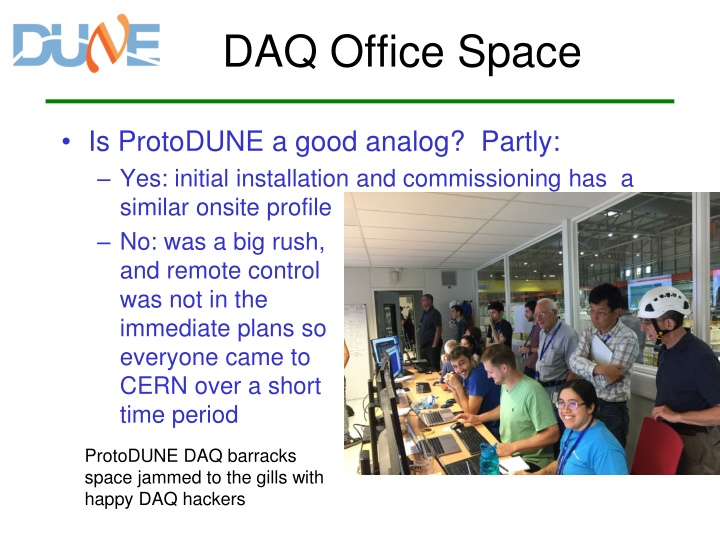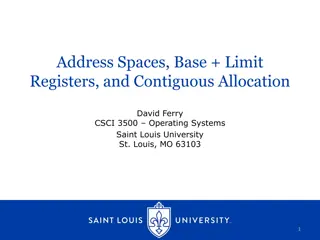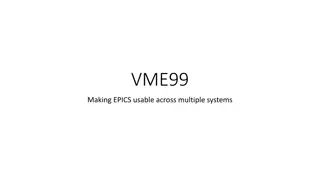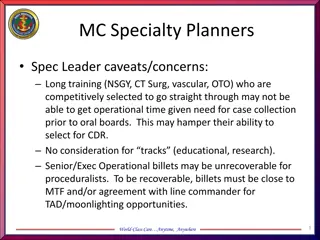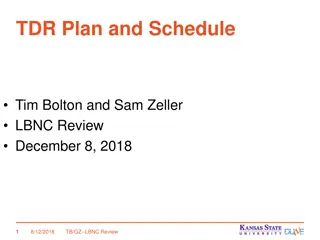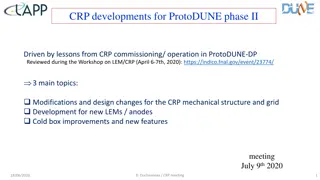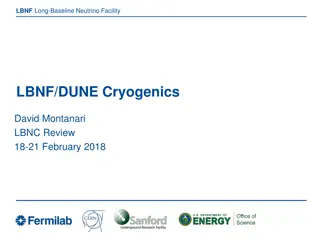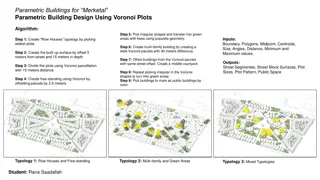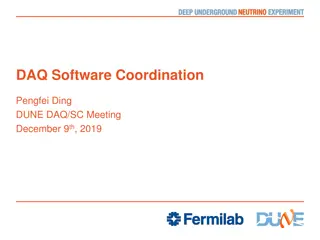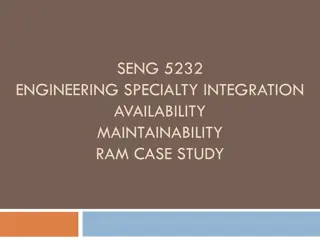Organizing DAQ and Operational Spaces for ProtoDUNE Project
In the context of the ProtoDUNE project, the organization of DAQ and operational spaces is crucial for efficient functioning. The initial installation at CERN faced challenges, prompting the need for remote control capabilities. The setup at SURF requires a thoughtful layout to accommodate key subsystems and expert workstations. Repurposing workstations and implementing remote control strategies, as seen in projects like NOvA, can enhance efficiency and coordination. Planning for both DAQ and non-DAQ operational activities is essential for successful project execution.
Download Presentation

Please find below an Image/Link to download the presentation.
The content on the website is provided AS IS for your information and personal use only. It may not be sold, licensed, or shared on other websites without obtaining consent from the author.If you encounter any issues during the download, it is possible that the publisher has removed the file from their server.
You are allowed to download the files provided on this website for personal or commercial use, subject to the condition that they are used lawfully. All files are the property of their respective owners.
The content on the website is provided AS IS for your information and personal use only. It may not be sold, licensed, or shared on other websites without obtaining consent from the author.
E N D
Presentation Transcript
DAQ Office Space Is ProtoDUNE a good analog? Partly: Yes: initial installation and commissioning has a similar onsite profile No: was a big rush, and remote control was not in the immediate plans so everyone came to CERN over a short time period ProtoDUNE DAQ barracks space jammed to the gills with happy DAQ hackers
ProtoDUNE space ProtoDUNE barracks were fairly small: most work was done by people sitting in B892 Barracks plus B892 was O(100) desks (!) But at a lab, people will expand to fill the available space. We have to plan more carefully for a remote site Some of those many people from the ProtoDUNE example can probably continue to work remotely, so what follows is an estimate of minimum stuff onsite
So, whats needed at SURF? For DAQ space, there are five major sub- systems, all getting debugged at once We can work with three main workstations: Monitoring, run control, debugging But also need space for experts with their laptops Goal is to have as few hands onsite as we can Supported by people back home or at CERN or FNAL Ideally not underground, working over network but on-site, as they might have to venture underground for physical connections etc
What about non-DAQ operational space? For run control etc, as non-DAQ people take runs to commission their APAs or whatnot During Commissioning. For physics data, DAQ RC work won t be happening, so we might be able to repurpose some of those previous three stations from the last slide Figure one Run Control plus one Monitoring workstation for commissioning work in parallel to DAQ work That s five double-monitor workstations Other controls (eg, CISC) should be in same room, for easier coordination
Really Rough Layout 3 DAQ, 2 Commissioning, back-to-back with 5 other workstations, 2m clearances, solely to give order-of-magnitude space
Remote Control MINOS, MINERvA, and especially NOvA have done a lot to make remote control rooms work well If those 5-10 workstations become the main control stations for an operational DUNE, simply mirroring them to remote desktops works well NOvA uses VNC sessions shared by dozens(!) of remote sites, to reduce shift-taking travel costs Ask a friendly NOvA collaborator to give you a tour of the instance in ROCW (in the FNAL Atrium) to see it in action
What about other space? If we re trying to keep people offsite, we will need (more than one!) meeting rooms (with videoconferencing) near the previous space: So those offsite experts can meet with their onsite minions to get stuff done Likely also need offices for quiet work or thinking. 2 small offices w/ 2 people each? Other groups also likely to need these same two things, so how many in total?
Comparison CMS s control room at CERN s main site, and the smaller one at FNAL is probably not a bad reference point: similarly scaled detectors! Worked up in detail here: https://lss.fnal.gov/archive/test-tm/2000/fermilab-tm- 2393-e.pdf Note that we re not requesting the luxury-car grade accoutrements in the FNAL room but alsp note that it s public outreach components probably are important: linking to a visitor s center keeps coming up and unlike CMS @ FNAL, we will actually have (a lot of) humans there to occupy it
